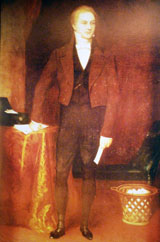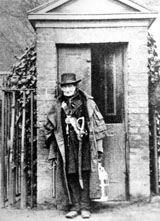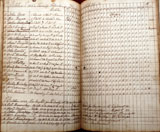Worksheet
Click on any image for a larger view.
Specimen Answers / Discussion
- The Metropolitan Police was established in 1829 and the metropolitan parish watches essentially ceased at the same time. Photography was in an experimental early stage during the 1830s but not widely available until the middle of the century. It is likely therefore that the watchman in this picture had finished his service long before the photo was taken.
- If the interpretation of some of the street names is uncertain, start from those that can be easily identified. The area would have been contiguous. Some streets may have disappeared from the modern maps.
- There remains debate about this. The traditional explanation that the Metropolitan Police was established because the system that existed during the eighteenth century was completely useless, no longer holds water. The police appears to have been created partly to ensure a uniform spread of men across the metropolis regardless of the wealth of parishes, and partly also to obviate the need for troops to suppress riots. Historians have also pointed towards a new, general desire for a better maintenance of order on the streets.
- The new police appear to have patrolled the streets in a fashion very similar to the old Bow Street patrols and the better of the old parish watchmen. You might also have noted the use of the word constable, employed originally to refer to parish officers and then, with the creation of the Metropolitan Police, the lowest ranking officers were called 'public constable'.
- There were a range of concerns:
- having to pay (possibly much more than previously) for a force over which local rate payers had no control;
- fears that the police were a military body designed to oppress working people;
- fears that a centrally organised and controlled police was a threat to rights and liberties.
 Sir Robert Peel
Sir Robert Peel

